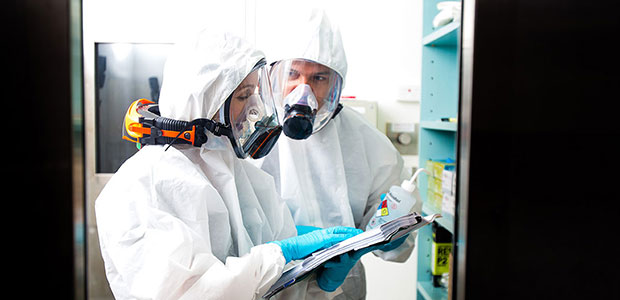
Respiratory Protection has Never Been More Important: Selection and Considerations for Proper Use
When the respiratory system encounters threats for which little to no effective natural defense exists, it is imperative to have controls in place to prevent exposure.
- By Dr. Alex Birrell
- Feb 01, 2022
Respiratory protection is essential to the health and productivity of workers at risk of exposure to airborne hazards. Common airborne contaminants in large industrial or healthcare sectors are at best irritants—and at worst, acutely lethal. In the industrial sector, there are known carcinogens, such as crystalline silica, present in workspaces. In healthcare, employees must be protected against life-threatening airborne viruses.
Through modern industrial processes or global pandemics, exposure to airborne contaminants such as silica, wildfire smoke, coal, welding fumes and Covid-19 could pose acute and long-term health issues such as asthma, COPD, cancer or viral infections. In some cases, the hazards are dose dependant and in others even limited exposure cause serious life-threatening disease. When the respiratory system encounters threats for which little to no effective natural defence exists, it is imperative to have controls in place to prevent exposure.
RPE—The Personal Line of Defense
There remain many workplaces and specific tasks where exposure cannot be controlled by engineering controls alone. For example, where tasks are undertaken in new or unfamiliar sites (contract work and mobile teams), remote locations (mine operations) or where workers are required to be located close to the source of the airborne contaminant (patient care, hard rock cutting). Some hazards may remain even after the use of engineering controls and the use of respiratory protective equipment (RPE) becomes necessary to protect workers.
Considerations in Selection
When selected and used appropriately, PPE can significantly reduce exposure to occupational hazards. In the selection of RPE, there are environmental considerations such as type of airborne contaminant, tasks, other personal equipment and location (clinical setting, intrinsically safe areas, tight spaces, working from height). Due to the importance of RPE selection, there are guidelines, standards and regulations advising the type, fit and level of protection offered. The standards will also state that the choice of respirator must correspond to the type of hazard.
Other considerations for RPE use are: compatibility with any other personal protective equipment (PPE) and user factors such as hot workplace environments, health conditions, confined workspaces or other relevant conditions to a particular workplace setting.
There exist a sizable range of respirators, filters and cartridges specifically designed to handle contaminants in a variety of forms—particles, gases or vapours. Below, we will discuss the two most popular: N95s and PAPRs.
This article originally appeared in the February 1, 2022 issue of Occupational Health & Safety.